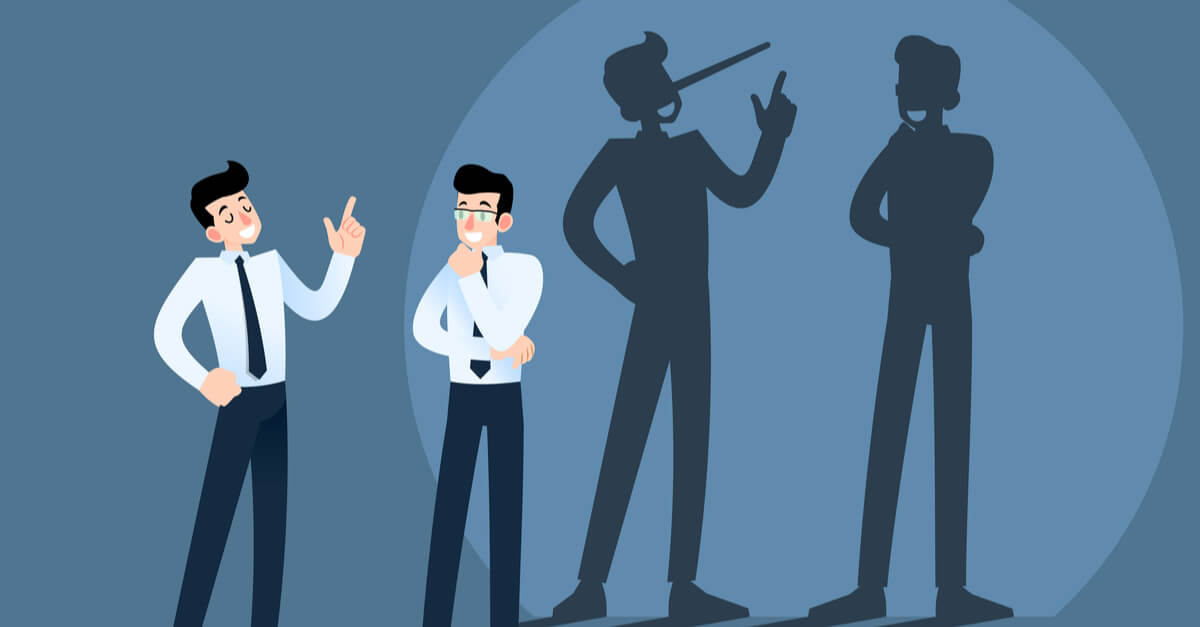If anyone asked, most of us would say we never cheat or cheat. Almost all of us believe that what we think is true and that we are completely sincere in most of our words and actions. However, Quattrone and Tversky’s experiment showed that this was not the case.
Quattrone and Tversky’s experiment, conducted in 1984 and originally published in the Journal of Personality and Social Psychology, had as its main objective to prove the existence of a cognitive bias called ‘self-confirmation bias’, which implies the need to convince ourselves that what we think is true, even if it is not.
- This bias of self-confirmation is related to lying.
- However.
- In this case.
- These lies focus primarily on ourselves.
- We mean self-deception.
- Which is a process by which we stop seeing or taking into account aspects of reality that contradict our beliefs or make us uncomfortable.
Quattrone and Tversky’s experience shows that we often make mistakes, do not do so with malicious intentions or without respecting the truth, it is simply a mechanism that helps us avoid the painful or uncomfortable aspects of reality.
“Rationalization can be defined as self-deception through reasoning. “Karen Horney
Quattrone and Tversky’s experiment was based on a group of 34 volunteers. Researchers informed them that they would be investigating “the medical and psychological aspects of athletics. “Although it wasn’t true, they had to believe it.
The researchers then asked them to immerse their arms in cold water and informed participants that their cold water resistance level was a very important indicator of their overall health, which was also not true.
They were then asked to do other tasks, including biking and other similar activities, and were simply intended to be a distraction.
At the end of it all, they talked to volunteers about “life expectancy. “During this conversation, researchers informed them that there were two types of hearts: type I was more resilient and therefore less vulnerable to the development of heart disease. Type II, on the other hand, was a weak heart and sensitive to disease.
After this first phase, Quattrone and Tversky’s experiment took a turn: the group of volunteers split in two. In addition, the researchers told the first group that arms submerged in cold water were an indicator of whether each had a type I or type II heart.
They added that those with a type I heart, that is, strong and resistant, could stay longer with their arms submerged in cold water, did they tell the other group otherwise? Those with a strong and resistant heart would last less with their arms submerged in cold water.
Subsequently, the researchers asked all volunteers to re-submerge their arms in cold water so that they could be reassessed. The result was curious: the members of the first group remained in cold water much longer than the first time they conducted the experiment With the other group, the opposite has happened.
The time they kept their arms in cold water varied, on average, by 10 seconds.
Those who had initially kept their arm submerged for 35 seconds and belonged to group 1 now reached 45 seconds; those who had held for 35 seconds and were in group two have now only reached 25. What could the researchers conclude?
To clarify the findings, the researchers asked all participants if information about both types of heart made them resist more or less time with their arms in cold water to show that they had a strong heart. Of the 38 volunteers, 29 denied it. Then they asked if they thought they had a healthy heart. 60% of those who refused to be influenced by information about the heart said yes.
According to the researchers, the results showed that we have a strong tendency to mislead; some completely delete the actual data, only to show that they are right; in doing so, they avoid situations that can be embarrassing or disturbing.

